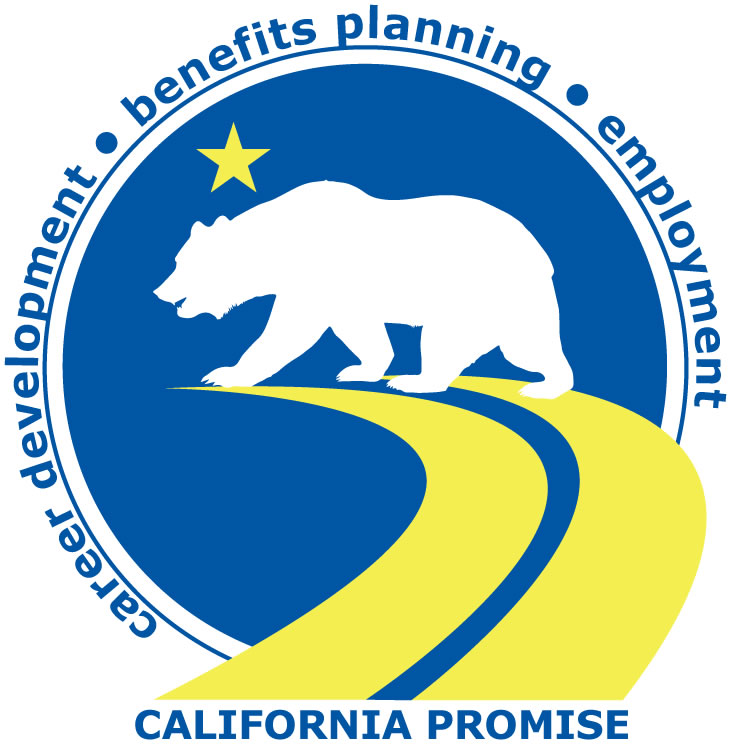The Two Year Performance Report for CaPROMISE
CaPROMISE Two-Year Performance Report of Outreach, Recruitment, Intake and Intervention Efforts with the Youth and their Families

Reporting period: October 1, 2013 through September 30, 2015
Prepared by the
Interwork Institute, San Diego State University
for and on behalf of
The California Department of Rehabilitation
and
the State Agency partners, the 20 Local Educational Agency partners, the 16 Family Resource Centers and SSI participants and their families
September 30, 2015
Executive Summary
The five-year CaPROMISE research and demonstration effort is one of six projects funded nationally that is designed to establish and operate model demonstration projects to improve the education and employment outcomes of youth. The CaPROMISE Goal is: “increased self-sufficiency for SSI youth and their families”. The California effort (identified as CaPROMISE) is administered by the California Department of Rehabilitation (CDOR) in collaboration with five State agencies, 20 Local Education Agencies, 16 Family Resource Centers and the Interwork Institute at San Diego State University. This report describes the accomplishments of the first two years (October 1, 2013 through September 30, 2015) of CaPROMISE and outlines the challenges, opportunities and recommendations for the following three-year efforts. CaPROMISE is a “work in progress”. The learning and experiences are continuous and are shaping our knowledge regarding effective outreach, recruitment and intervention strategies to support the youth receiving SSI and their families.
The focus of CaPROMISE is to recruit at least 3,078 youth who are current SSI recipients between the ages of 14 and 16. The youth’s family members, while not covered in this number, are also served through CaPROMISE. Half of the youth and family members will be in the Usual Services Group (i.e., those who will not receive additional interventions) and the other half will be youth and their family members who will be in the CaPROMISE Services Group (i.e., those who will receive individualized support and interventions to achieve better outcomes, including graduating from high school ready for college and a career, participate in and completing postsecondary education and job training, and obtaining competitive employment in an integrated setting). The identification of the group designation is completed through a random assignment system.
The CaPROMISE model works through partnerships with Local Education Agencies (LEAs) who are the primary provider of outreach, recruitment and interventions with the youth and their families. The LEAs have employed Career Service Coordinators (CSCs) who are responsible for providing support for at least 26 youth and their family members for the full duration of the project. The CSCs use a person-centered/driven planning approach to designing, developing and implementing interventions to achieve the goal of increased self-sufficiency. Collaboration with local Family Resource Centers and a myriad of community organizations and resources is essential to the process. As the youth mature, they are referred to CDOR and other State agencies and community providers that support their individualized needs and expectations. With all engagements and interventions, the focus is the unique needs and expectations of the youth and their family members.
The Two-Year Performance report of CaPROMISE provides an analysis (see Section 1) of the preliminary data as of July 1, 2015 of 442 youth and their family members who have completed the recruitment and selection process and begun receiving interventions designed to promote positive education and employment outcomes. In addition, there is a description of the CaPROMISE partners and the organizational structure of the entire project (see Section 2). A key partner is the Family Resource Centers (see Section 3) that provide training, technical assistance and support with the CaPROMISE staff and youth and family members. The following three Sections (see Sections 4 through 6) cover the data management system and technology, the research and program evaluation efforts, and the training and technical assistance for all CaPROMISE staff and selected community partners. Finally, Section 7 describes the Challenges, Opportunities and Recommendations as CaPROMISE begins its third year of implementation.
The following provides a brief restatement of the Challenges, Opportunities and Recommendations for CaPROMISE at the conclusion of the first two years.
Challenges include the following:
- Continuing to sustain and focus on person-centric interventions.
- Maintaining the balance between outreach and recruitment and the implementation of interventions with CaPROMISE youth and their families.
- Providing support, continuing engagement, suitability and retention of the Career Service Coordinators, support staff and LEA managers while ensuring fidelity across all partners within the four CaPROMISE service regions.
- Sustaining support, engagement, education and employment from the State Agency partners (i.e., CDOR, America’s Job Centers, DDS Regional Centers, etc.), the Federal agencies (i.e., SSA and OSEP), LEA senior administrators and other community partners.
- Implementing strategies with individual CaPROMISE LEAs for managing “geographic spread”, a large number of schools within an LEA, and difficulties centralizing activities due to limited participant and/or family member transportation.
Opportunities include the following:
- Increasing work experiences and educational and training options for each CaPROMISE youth and their families.
- Supporting each CaPROMISE family, through the LEAs and the Family Resource Centers, in their efforts to learn about new and existing legislative efforts that are intended to improve quality of life outcomes.
- Examining the cost effectiveness of CaPROMISE using evidence-based measures that will demonstrate the importance, human and economic benefits, and sustainability of the interventions with each youth and their family members.
- Integrating and capitalizing on the skill sets of CSCs regarding transition services, financial and benefits planning, family engagement and community placement.
- Sharing best practices, resources and service options (i.e., assisting the LEAs to become Employment Networks, expanding linkages with Workability and Transition Partnership Programs, etc.) across the four CaPROMISE Regions to strengthen sustainability.
- Expanding the on-going design and implementation of the Data Management System to support and verify effective outreach, recruitment, interventions and positive program outcomes for CaPROMISE.
- Improving and strengthening the partnerships with the local offices representing the CaPROMISE state partners.
Recommendations include the following:
- Increasing the person-driven planning and person-centric interventions with each CaPROMISE youth and their family members.
- Strengthening the family engagement and involvement with each CaPROMISE youth and their own development
- Revising the CDOR referral and eligibility protocol for each CaPROMISE youth (14 and above) to ensure a continuum of support and services as they transition to postsecondary education, training, employment and self-sufficiency.
- Developing benefits planning and management webinars for all stakeholders to ensure a better understanding and use of SSA Work Incentives that promote short and long term education and employment outcomes for each CaPROMISE youth and their family members.
We are certain in the coming months that these challenges, opportunities and recommendations will be addressed, refined and expanded as we continue to learn. We know that the only viable approach to increasing positive life outcomes with personal development and community inclusion must be addressed through the eyes and the behaviors of each CaPROMISE youth and their family members.
Click the link to read the full report.

